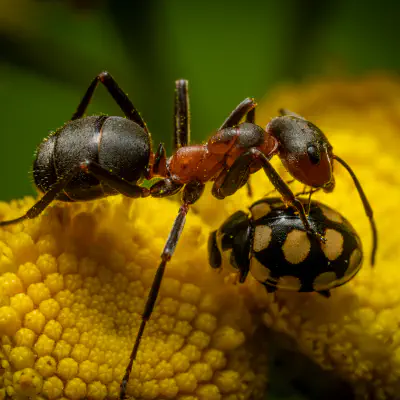O. antiqua is native to Europe, but now has a transcontinental distribution in the Palaearctic and the Nearctic regions. The species is not on the IUCN (2007) Red List; and in the UK is considered a common resident.
Rusty Tussock Moth (lat. Orgyia antiqua)


Distribution and status

Habitat
In the UK, O. antiqua may be encountered in a variety of shrub-based habitats, including gardens, parks, open woodland, fens, hedgerows, heaths. and moors.

Description
A striking dimorphism exists between the male and the female moths of this species. The male moth typically has orange- to red-brown (ochreous red and dark brown) wings; each fore wing has a white comma-shaped (tornal) spot. It has marked plumose (short, bipectinate) antennae. The wingspan measures between 35 and 38 mm. The female moth has vestigial wings and is flightless; it is light grey-brown (ochreous grey), has "shortly bipectinate" antennae, and a swollen abdomen.
The compound eyes of the two sexes differ not only with regard to their size, number of facets and internal organization and ultrastructure, but also with regard to their sensitivity to ultraviolet radiation The hairy caterpillar is spectacular, with "humps", "horns", and a "tail" in a combination of dark grey, red, and yellow.

Host plants
Caterpillars are polyphagous and feed on a wide range of deciduous trees and shrubs, such as birch (Betula), Crataegus, lime (Tilia), Prunus, Quercus, Rubus, Salix, Tamarix, Vaccinium, Aeonium haworthii or Delonix regia. In Scotland, the species is almost always found on birch, but has also been recorded damaging Sitka spruce.

External links
The Vapourer on UKMoths Fauna Europaea Lepiforum.de JustGreen Bug of the Month (PDF) Archived 15 January 2006 at the Wayback Machine Good plant protection practice (PDF)
This is not intended to be a dry lexicon. Personal stories and sensitive articles form the framework for our pictures: „Explained as easy as pie — the exciting adventures of ants“
Discover the fascinating lifestyles and adventures of ants in their well-organized colonies.
Full post

Copyright

This article uses material from the Wikipedia article Orgyia antiqua the free encyclopedia Wikipedia which is released under Creative Commons Attribution-ShareAlike 4.0 International License). On Wikipedia a list of authors is available.